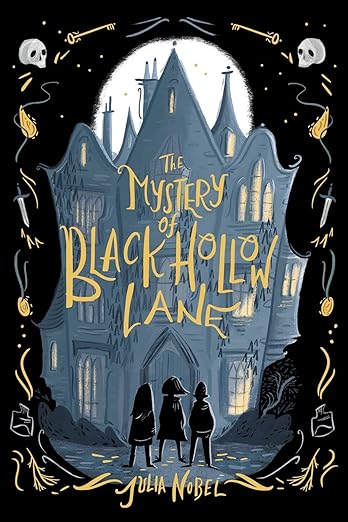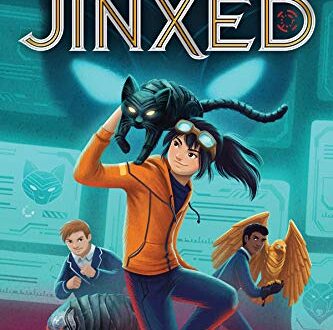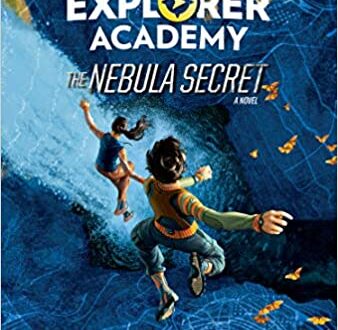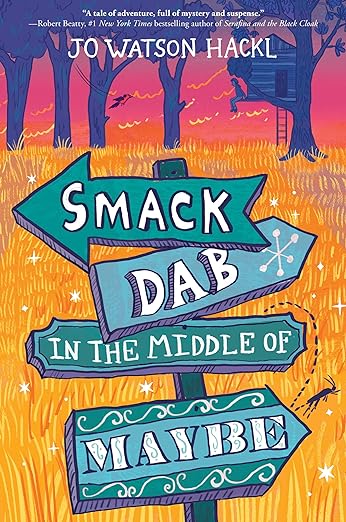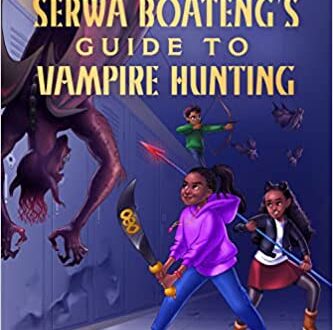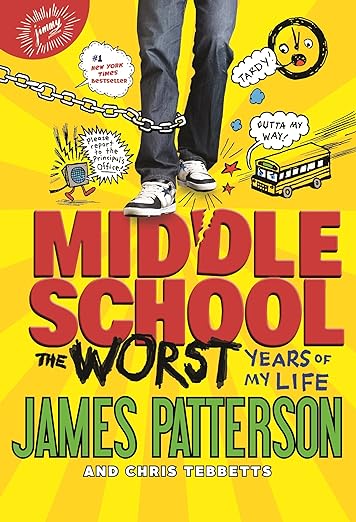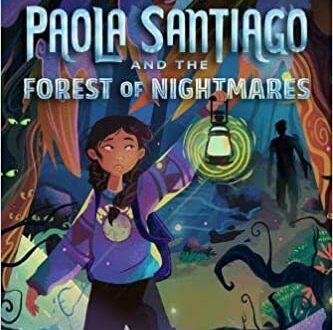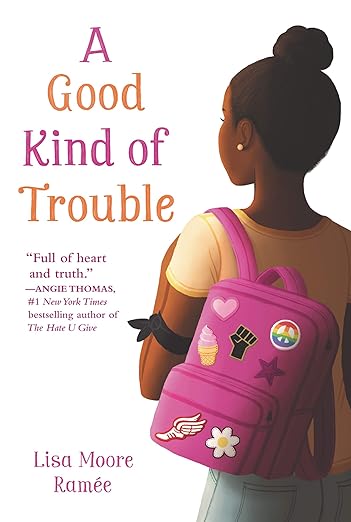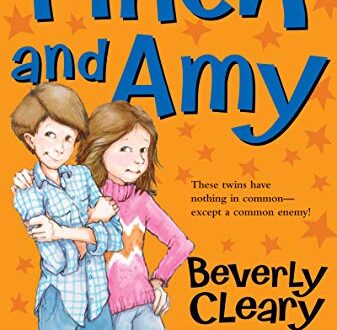-
Syzygy and Selenelion
Since the recent lunar mission by Japan has been in the news lately, let’s revisit a space related issue with two words every stargazer should know—syzygy (pronounced sih-ZIH-jee) and selenelion.
Syzygy is when the sun, Earth, and the moon align. This happens twice a month during the full moon and the new moon. Syzygy can also occur when the sun, Earth, and another planet line up. During a new moon syzygy, the sun and the moon lie on the same side of Earth. We know this as a conjunction.
The full moon syzygy happens when Earth comes between the sun and the moon. People know this as opposition. And a third example of syzygy is during a total lunar eclipse, when the full moon is on the opposite side of the earth from the sun.
A fourth example of syzygy happens during an annular eclipse when the moon aligns between Earth and the sun. It leaves a ring of the sun’s light still visible around the moon. This alignment usually occurs every year or two, but it is only visible across a small area on Earth. This is because the moon is so much smaller than the sun.
A solar eclipse is the fifth example of syzygy. This happens when the moon orbits Earth and it moves between Earth and the sun in its passage. This is called a solar eclipse, and the moon appears as a dark shadow on just a small part of the sun’s gigantic surface.
Since both the sun and the moon orbit Earth, why don’t eclipses occur every single month at the full and new moons?
If Earth and the moon orbited on the same plane around the sun, we would indeed have a total solar eclipse—and a total lunar eclipse—every month. But the moon’s orbit is inclined to Earth’s orbit by about five degrees. So, no total eclipses every month.
Now what is a selenelion, which is sometimes called a selenehelion? First, it helps to understand what the word means. It is a French word that comes from the ancient Greek words selēnē, moon and hēlios sun. This is an uncommon eclipse phenomenon where you can see the sun near the horizon and the eclipsed moon near the opposite horizon at the same time.
Wouldn’t that be a cool thing to see?
You can now impress your friends with your stargazing knowledge. Look how much you have learned in a short time about eclipses and planet alignments. Plus, you now have two interesting words you can use that most adults have never heard before. Have fun using them and impressing the people around you. Who knows, maybe you can interest them into learning more fun facts about the world around them.
AIME
-
The Mystery of Black Hollow Lane
For fans of The Mysterious Benedict Society and The Blackthorn Key series comes an award-winning boarding school mystery about twelve-year-old Emmy, who’s shipped off to a prestigious British school. But her new home is hiding a secret society … and it may be the answer to Emmy’s questions about her missing father.
With a dad who disappeared years ago and a mother who’s a bit too busy to parent, Emmy’s sent off to Wellsworth, a prestigious boarding school in England, where she’s sure she won’t fit in.
But then she finds a box of mysterious medallions in the attic of her home with a note reading: These belonged to your father.
When she arrives at school, she finds the strange symbols from the medallions etched into walls and books, which leads Emmy and her new friends, Jack, and Lola, to Wellsworth’s secret society: The Order of Black Hollow Lane.
Emmy can’t help but think that the society had something to do with her dad’s disappearance, and that there may be more than just dark secrets in the halls of Wellsworth…
For Reader 8-12 from author Julia Nobel.
-
The Milky Way—Exploring Our Galactic Home
Greetings, young astronomers, and cosmic adventurers! Get ready to embark on an awe-inspiring journey through the vast expanse of our galaxy, the Milky Way. Today we’ll delve into the mysteries that lie beyond our Earthly borders, where billions of stars twinkle in the darkness, and captivating wonders await. The Milky Way isn’t just a band of faint light across the night sky; it’s our galactic home, a place where countless celestial marvels reside. So, strap on your imaginary spacesuits, grab your telescopes, and join us as we set out to explore the wonders of our galaxy. From dazzling star clusters to swirling spiral arms, we’ll unravel the secrets of the Milky Way and expand our understanding of the magnificent universe that surrounds us. Get ready to be dazzled as we embark on a cosmic adventure through the extraordinary realm of the Milky Way!
The Milky Way Galaxy is a large spiral system comprising several hundred billion stars, one of which is the Sun. It takes its name from the Milky Way, the irregular luminous band of stars and gas clouds that stretches across the sky as seen from Earth. Astronomers don’t have a full grasp of the Milky Way Galaxy, unlike some other star systems. Interstellar dust hides much of the Galaxy, but radio and infrared telescopes can detect radiation to reveal its structure.
Like early explorers mapping the continents of our globe, astronomers are busy charting the spiral structure of our galaxy, the Milky Way. Using infrared images from NASA’s Spitzer Space Telescope, scientists have discovered that the Milky Way’s elegant spiral structure is dominated by just two arms wrapping off the ends of a central bar of stars. Scientists previously thought that our galaxy had four major arms.
Scientific advances have changed our perception of the galaxy to two major and two minor arms, rather than the old four major arms. The galaxy’s two major arms (Scutum-Centaurus and Perseus) are attached to the ends of a thick central bar, while the two now-demoted minor arms (Norma and Sagittarius) are less distinct and located between the major arms. The major arms consist of the highest densities of both young and old stars; the minor arms are primarily filled with gas and pockets of star-forming activity.
American astronomer Harlow Shapley made the first reliable measurement of the size of the Milky Way Galaxy in 1917. He determined it has a diameter of about 100,000 light-years. His values have held up remarkably well over the years.
For a long time, it was thought that Earth was the center of the Milky Way Galaxy. Today we know better. Our Sun lies near a small, partial arm called the Orion Arm, or Orion Spur, located between the Sagittarius and Perseus arms. Our solar system is about 30,000 light-years from the center of the Milky Way Galaxy. The Galaxy itself is thought to be about 100,000 light-years in diameter.
Although most stars in the Galaxy exist either as single stars like the Sun or as double stars, there are many conspicuous groups and clusters of stars that contain tens to thousands of members. These objects can be divided into three types: globular clusters, open clusters, and stellar associations. They differ primarily in age and in the number of member stars.
The largest and most massive star clusters are the globular clusters, so called because of their roughly spherical appearance. The Galaxy contains over 150 globular clusters (the exact number is uncertain because of obscuration by dust in the Milky Way band, which probably prevents some globular clusters from being seen). A conspicuous component of the Galaxy is the collection of large, bright, diffuse gaseous objects called nebulae. The brightest of these cloudlike objects are the emission nebulae, large complexes of interstellar gas and stars in which the gas exists in an ionized and excited state. This condition is produced by the powerful ultraviolet light emitted from the very luminous, hot stars embedded in the gas. Because emission nebulae consist almost entirely of ionized hydrogen, they are usually referred to as H II regions.
The Milky Way is a dynamic and exciting place to explore. There is much known about it. But there is still much more to be discovered.
Maybe you will be part of the team of scientists doing that discovery someday!
AIME
-
Smack Dab in the Middle of Maybe
How far would you go to find something that might not even exist?
All her life, Cricket’s mama has told her stories about a secret room painted by a mysterious artist. Now Mama’s run off, and Cricket thinks the room might be the answer to getting her to come back. If it exists. And if she can find it.
Cricket’s first clue is a coin from a grown-over ghost town in the woods. So with her daddy’s old guidebook and a coat full of snacks stolen from the Cash ‘n’ Carry, Cricket runs away to find the room. Surviving in the woods isn’t easy. While Cricket camps out in an old tree house and looks for clues, she meets the last resident of the ghost town, encounters a poetry-loving dog (who just might hold a key to part of the puzzle), and discovers that sometimes you have to get a little lost . . . to really find your way.
For Readers 9-12 from author Jo Watson Hackl.
-
The History of Pizza
Hey there, young foodies, and pizza lovers! Are you ready to embark on a mouthwatering adventure that will take you back in time to discover the fascinating origins of everyone’s favorite cheesy delight? Today we’ll dig into the tantalizing history of pizza, a culinary masterpiece that has captured the hearts (and taste buds) of people around the world. From its humble beginnings as a simple flatbread to the mouthwatering creations we know and love today, pizza has a rich and flavorful story to tell. So, grab a napkin, loosen your belts, and get ready to sink your teeth into the captivating history of this beloved dish that has become a global sensation. Let’s follow the tantalizing trail of dough, sauce, and toppings as we unravel the delectable journey of pizza!
Pizza has been around for centuries. An ancestor of pizza probably was the focaccia, a flat bread known to the Romans as Latin panis focacius, to which they added toppings. Modern pizza evolved from similar flatbread dishes in Naples, Italy, in the 18th or early 19th century.
The word pizza was first documented in A.D. 997 in Gaeta and successively in different parts of Central and Southern Italy. Pizza was mainly eaten in Italy and by emigrants from there. This changed after World War II when Allied troops stationed in Italy came to enjoy pizza along with other Italian foods.
Just so you know—Gaeta is a city in the province of Latina, in Lazio, Southern Italy. It is set on a promontory stretching towards the Gulf of Gaeta, and it is 75 miles (120 kilometers) from Rome and 50 mi (80 km) from Naples. Gaeta has a long history dating back to ancient times, when it was a Roman port and resort town. It has many historical and artistic attractions, such as the megalithic walls, the Roman mausoleums of Lucius Munatius Plancus and Lucius Sempronius Atratinus, the medieval castle and the churches of Annunziata and San Francesco. Gaeta is also famous for its beautiful beaches and its delicious food, especially the tiella, a savory pie stuffed with various ingredients.
In Sardinia, French and Italian archaeologists have found bread baked over 7,000 years ago. Foods similar to pizza have been made since antiquity. Records of people adding other ingredients to bread to make it more flavorful can be found throughout ancient history.
- In the 6th century BC, Persian soldiers serving under Darius the Great baked flatbreads with cheese and dates on top of their battle shields.
- In Ancient Greece, citizens made a flat bread called plakous, which was flavored with toppings like herbs, onion, cheese, and garlic.
- An early reference to a pizza-like food occurs in the Aeneid (ca. 19 BC), when Celaeno, the Harpy queen, foretells that the Trojans would not find peace until they are forced by hunger to eat their tables (Book III). In Book VII, Aeneas and his men are served a meal that includes round cakes (like pita bread) topped with cooked vegetables. When they eat the bread, they realize that these are the “tables” prophesied by Celaeno.
Focaccia is one of the flatbreads that still exists today from ancient Mediterranean times. Foods similar to flatbreads in other parts of the world include Chinese bing (a wheat flour-based Chinese food with a flattened or disk-like shape); the Indian paratha (in which fat is incorporated); the Central and South Asian naan (leavened) and roti (unleavened); the Sardinian carasau, spianata, guttiau, pistoccu; and Finnish rieska.
In 16th-century Naples, a galette flatbread was referred to as a pizza. Known as the dish for poor people, it was sold in the street and was not considered a kitchen recipe for a long time. This was later replaced by oil, tomatoes (after Europeans came into contact with the Americas) or fish. A popular story states that on June 11, 1889, Raffaele Esposito made the “Pizza Margherita” in honor of Queen Margherita of Savoy. The pizza was garnished with tomatoes, mozzarella, and basil, symbolizing the Italian flag. Pizza grew into a type of bread and tomato dish, often served with cheese. Until the late 19th or early 20th century, the dish was a sweet flat bread, similar to schiacciata.
Today people around the world are still enjoying pizza! Are you one of them?
AIME
-
Middle School, The Worst Years of My Life (Middle School, 1)
In the hilarious and awkward start to this #1 mega-bestselling sixteen-book series, beloved misfit Rafe Khatchadorian takes on his first year of middle school…by breaking all the rules!
Rafe Khatchadorian has enough problems at home without throwing his first year of middle school into the mix. Luckily, he’s got a foolproof plan for the best year ever, if only he can pull it off: With his best friend Leonardo the Silent awarding him points, Rafe will break every rule in his school’s oppressive Code of Conduct. Chewing gum in class—5,000 points! Running in the hallway—10,000 points! Pulling the fire alarm—50,000 points! But when Rafe’s game starts to catch up with him, he’ll have to decide if winning is all that matters, or if he’s finally ready to face the rules, bullies, and truths he’s been avoiding.
#1 bestselling author James Patterson’s debut middle-grade novel addresses some of middle schoolers’ biggest issues: bullies, first crushes, and finding out what makes each of us special.
For Readers 9-12 from best-selling author James Patterson.
-
Exploring the Enchanting World of Leprechauns!
Greetings, curious adventurers, and seekers of magical wonders! Are you ready to journey into the enchanting realm of leprechauns, those mischievous beings from Irish folklore? Today, we’ll dive into the captivating world of these pint-sized tricksters and uncover the legends and lore that surround them. Leprechauns have fascinated generations with their pots of gold, colorful attire, and a knack for playing pranks. So, put on your imaginary green hats, grab a four-leaf clover for luck, and let’s follow the rainbow as we unravel the secrets and stories behind these whimsical creatures known as leprechauns!
Leprechauns are a type of fairy, gnome, or elf-like creature. They are small in size and usually have a grouchy disposition. According to legend, leprechauns dance the Irish jig so much they wear out their shoes. Some stories say they are mischievous while others say they are harmless creatures that keep to themselves. Some people claim to have seen a leprechaun and say they are real, while others believe they are just a myth and are not real.
According to some sources, leprechauns live only in Ireland, which is also known as The Emerald Isle. They are a type of male fairy and are a class of fairy folk that live near Fairy Rings, which are ancient Celtic earthworks. They prefer isolation and solitude and often choose dismal and lonely places to make their homes. Some places where leprechauns may live are:
- caves
- caverns
- clover fields
- county lanes
- fairy forts and rings
- glens
- grassy hills
- hollowed fallen logs
- hollowed oak or hawthorn tree trunks
- meadows
- mountains
- mushroom patches
- rocky areas
- shamrock fields or patches
- tree roots
Some leprechaun homes are secret and sacred spaces that lead to fairylands, where time and space operate differently. Leprechauns can also travel through an intricate network of deep underground caves and tunnels. Leprechauns are often neighbor with other fairies in the thousands of fairy forts sprawled within the Irish landscape.
Leprechauns can look different depending on the stories and legends, but they are usually small and round, with red hair and red skin. They often wear green coat and trousers with gold buttons, a black or green hat with a buckle, and shiny black shoes. They also have a beard and pointy ears. Some people think they are cute, while others think they are ugly.
According to some sources, leprechauns make gold by making shoes for fairies, who pay for them in gold. They also trick others into giving them gold or discover it for themselves by living underground. Leprechauns are very good at hiding their gold and keeping it safe from anyone who might try to steal it.
Leprechauns have a varied diet that depends on what they can find in the forest. They like to eat sweet things like candy and cake, as well as savory dishes like potatoes and bacon. They also love to drink, and their favorite beverages include beer, whiskey, and green tea. Leprechauns are also fond of wildflowers, especially dandelions, which they used to make tea and salads. They also snack on nuts and other vegetables and fruits that grow in the forest.
People have mixed feelings about leprechauns. Some like them because they are a fairy or elf, and they consider seeing one as good luck. On the other hand, since leprechauns like to trick people into giving them gold, other people think it could be bad luck to encounter a leprechaun. But if you are the one who can trick them into giving up their gold to you. Then, encountering one can turn out to be lucky for you.
What do you think? Have you ever been lucky enough to see a leprechaun?
AIME
-
Fearless: A Middle Grade Adventure Story
Jessie wants to be fearless, like her deployed Army mom.
So, when she and her friends stumble onto a barn with terrified dogs inside, she steals one.
But how will she help a scared dog when Jessie herself feels anything but fearless?
For Readers 8-12 from author Kristin F. Johnson.
-
Dinosaurs in Hollywood
In the past, Hollywood has made a lot of movies about dinosaurs. Especially about dinosaurs living far from the hills of Hollywood. But did you know that 75 million years ago armored dinosaurs once roamed the hills and flatlands where today’s Hollywood tourists now roam? Along with the armored dinosaurs, known as Aletopeltas, saber-tooth tigers hunted their prey in the same area 2.5 million to 10,000 years ago. While dire wolves competed for the same food sources 125,000 to 9,500 years ago.
Aletopelta is a genus of ankylosaurid dinosaurs that lived in Southern California about 75.5-million-years ago. It is the only dinosaur ever to be found in southern California, and one of the few dinosaurs to be found in the entire state. The name Aletopelta means “wanderer shield,” because it was carried northward by plate tectonics from its original location near Mexico. Aletopelta was about 16 feet long and weighed about 2 tons (4,409 lbs.). It had a bony tail club and a pelvic shield made of osteoderms, which are bony plates embedded in the skin.
Ankylosaurus was a plant-eating dinosaur that was the largest of its family of dinosaurs called ankylosaurs. This family of dinosaurs had short, heavy bodies and were protected from head to tail with bony plates and spikes. The plates acted like armor, to help protect the animal against meat-eating dinosaurs (carnivores).
Aletopelta was discovered completely by accident in 1987; a road crew was doing construction work near Carlsbad, (115 miles south of Los Angeles) and the fossil of an Aletopelta was recovered from a ditch that had been excavated for a sewer pipe.
The Saber-Tooth Tiger is far and away the most famous (and most common) prehistoric mammal of California. This is known thanks to the recovery of literally thousands of complete skeletons from the famous La Brea Tar Pits of downtown Los Angeles. This predator was smart, but clearly not quite smart enough, as entire packs of saber-tooths got trapped in the muck when they attempted to feast on already-mired prey.
The saber-tooth tiger had a pair of elongated canine teeth in its upper jaw that were over 7 inches in length. These teeth were probably used for stabbing and slashing prey, such as bison, horses, mastodons, and ground sloths. The saber-tooth tiger was not closely related to the modern tiger or other modern cats. These ancient animals could weigh up to 880 pounds and had a muscular body and short limbs.
The dire wolf, Aenocyon dirus, is an extinct canine that lived in North America and eastern Asia 125,000 to 9,500 years ago. It was about the same size as the largest modern gray wolves, but had a more massive skull, a smaller brain, and relatively light limbs. It was a different species from the modern gray wolf. It is probably the most common mammal species to be found in Los Angeles’s famous La Brea Tar Pits.
Off the coast of Santa Monica, California—which is next door to Hollywood—lurked one of the largest and most powerful predators to have ever lived. It was the 67 foot long, 228,000-pound megalodon, an extinct species of shark. It had a massive skull with enormous jaws and giant teeth that could grow to over 7 inches. These teeth were used for stabbing and slashing prey, such as whales, seals, dolphins, fish, and other sharks. Megalodon fossils have been located in shallow coastal areas around the world, excluding Antarctica.
In 1980, Cuban-born physicist Luis Alvarez — along with his physicist son, Walter, concluded that the Earth was struck 65 million years ago by an iridium-rich meteorite or comet (the Chicxulub comet). The iridium residue from the impact object, along with millions of tons of debris from the impact crater, would have quickly spread all over the globe; the massive amounts of dust blotted out the sun, and thus killed the vegetation eaten by herbivorous dinosaurs, and this led to the demise of the carnivores.
A global catastrophe occurred 250 million years ago, resulting in the extinction of most land and marine animals. Ironically, it was this extinction that cleared the field for the rise of the dinosaurs—after which they managed to hold the world stage for a whopping 150 million years, until that unfortunate visit from the Chicxulub comet.
AIME
-
A Good Kind of Trouble
From debut author Lisa Moore Ramée comes this funny and big-hearted debut middle grade novel about friendship, family, and standing up for what’s right, perfect for fans of Angie Thomas’s The Hate U Give and the novels of Renée Watson and Jason Reynolds.
Twelve-year-old Shayla is allergic to trouble. All she wants to do is to follow the rules. (Oh, and she’d also like to make it through seventh grade with her best friendships intact, learn to run track, and have a cute boy see past her giant forehead.)
But in junior high, it’s like all the rules have changed. Now she’s suddenly questioning who her best friends are and some people at school are saying she’s not black enough. Wait, what?
Shay’s sister, Hana, is involved in Black Lives Matter, but Shay doesn’t think that’s for her. After experiencing a powerful protest, though, Shay decides some rules are worth breaking. She starts wearing an armband to school in support of the Black Lives movement. Soon everyone is taking sides. And she is given an ultimatum.
Shay is scared to do the wrong thing (and even more scared to do the right thing), but if she doesn’t face her fear, she’ll be forever tripping over the next hurdle. Now that’s trouble, for real.
For Readers 10-12.
